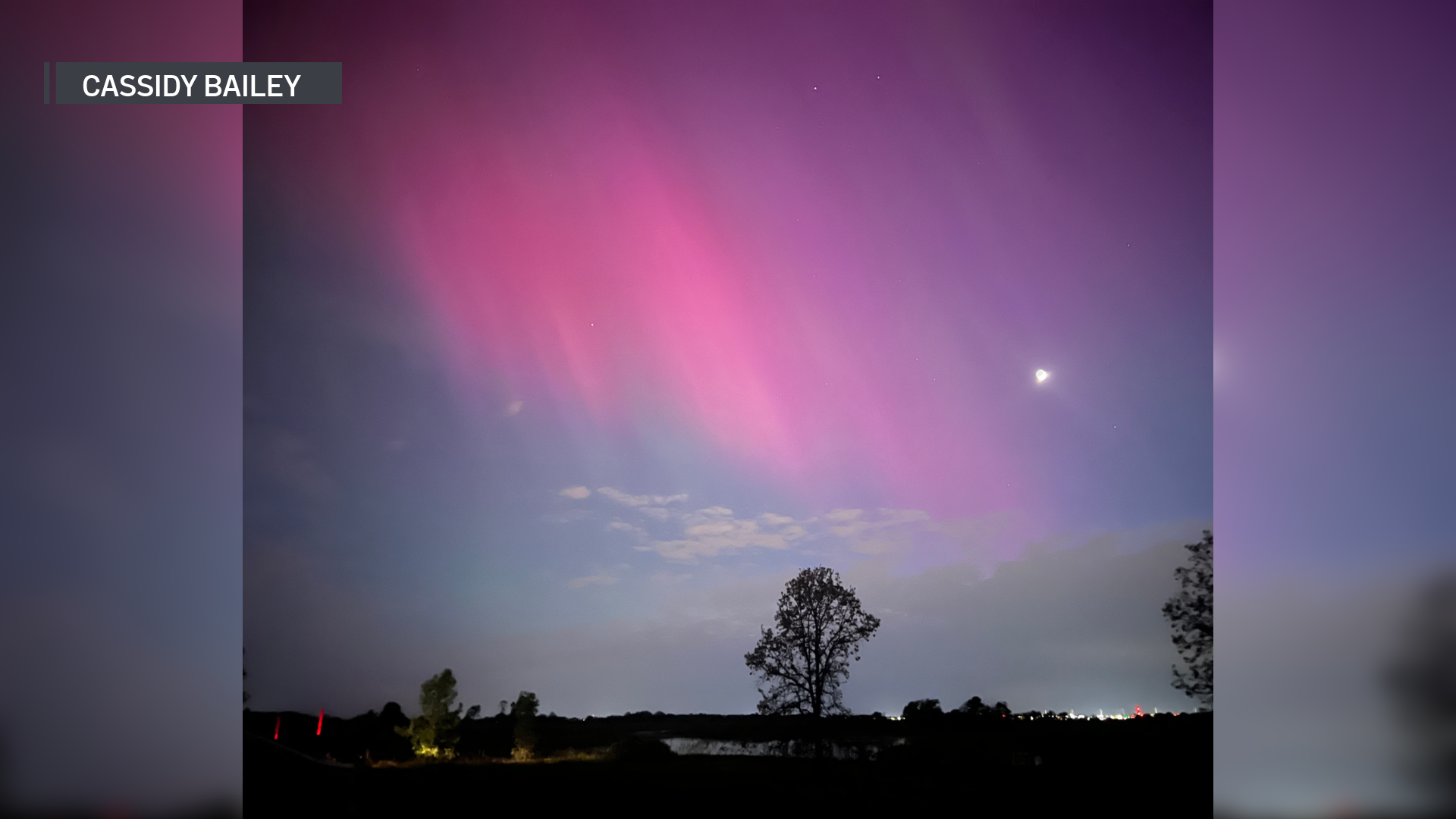It's official: The Chicago area's first big snowstorm of the winter season is here...although it arrived in the form of rain.
Early Tuesday morning, nearly all of the Chicago area was under either a winter weather advisory or a winter storm warning, with threats of heavy, wet snow, high winds, low visibility and dangerous travel conditions expected to last throughout the day.
MORE: Are Chicago-area schools closed today? Check school closures due to snow here
Some areas overnight, including counties to the south and east, saw upwards of four inches of snow, although some of those totals were expected to be gradually wiped out by Tuesday morning rain.
And though suburbs to the north and west didn't see much snow overnight, more is on the way, with some parts expected to see as much as 9 inches by Tuesday evening, the NBC 5 Storm Team said.
Here's a breakdown of what to expect as the snowstorm continues:
Winter Storm Warning for North, West suburbs
Local
According to the National Weather Service, a winter storm warning remains in effect until midnight Wednesday for Lake, McHenry, DeKalb, Kane and LaSalle counties in Illinois, and Kenosha Counties in Wisconsin.
"Heavy, wet snow and dangerous travel conditions expected," the NWS warned in an alert. "Travel could be very difficult. Patchy blowing snow could significantly reduce visibility."
Feeling out of the loop? We'll catch you up on the Chicago news you need to know. Sign up for the weekly Chicago Catch-Up newsletter here.
Wind gusts early Tuesday clocked in at 20-25 miles per hour, NBC 5 Storm Team Meteorologist Alicia Roman said, with gusts expected to reach as high as 40 mph by afternoon.
Additionally, snowfall rates were expected to exceed one inch per hour, creating dangerous driving conditions for both the morning and evening commutes.
"If you must travel, keep an extra flashlight for food and water," the NWS said.
Traffic cameras across parts of Illinois early Tuesday morning showed slick, slippery roads, wet snowflakes and low visibility.
Winter Weather Advisory
Kendall, Grundy, DuPage and northern Cook counties in Illinois, are under a winter weather advisory through midnight. Those parts could see an additional 2-4 inches of snow by Tuesday evening.
Other counties previously included in the advisory — Kankakee, Central and Southern Cook and Will Counties in Illinois, and Lake, Porter and LaPorte Counties in Indiana — were removed around 9 a.m. Tuesday.
In those areas, as much as 2-5 inches of snow was expected overnight and into Tuesday morning, though much of that snow was been wiped out by rain.
Further south, a rain and a snow mix was expected to gradually change back to all snow by the evening
"Wet snow and slippery travel conditions expected," the NWS alert said.
Snow totals and timing
Roman noted an estimated 1-4 inches of snow fell in counties under the winter weather advisory overnight, with more than 4 inches recorded in Joliet, and 3.6 inches recorded in Chicago. Morning rain wiped out the totals in some of areas, Roman said, adding that precipitation in those parts may stay in the form of rain as the day continues.
By Tuesday evening, counties in the advisory may only see an additional inch of snow accumulating.
North and west counties under the winter storm warning however could see snow totals of between 6 and 8, or even 9 inches by Tuesday night, forecast models show. Between 2 and 5 inches of snow was likely to fall between 7 and 10 a.m., with morning commutes likely impacted, Roman said.
"Plan for a messy morning commute, with slick roads and reduced visibility," Roman said, adding that morning winds of 20-25 miles per hour were expected to increase as the day continued.
ComEd officials Monday announced with the company’s Emergency Operations Center will open Tuesday to assist with any problems that may arise.
“The kind of snow forecasted this week can be especially problematic because it can cause branches and entire trees to topple onto our power lines,” COO Dave Perez said in a statement.
According to Roman, widespread snow was expected to continue falling throughout the day, with most areas seeing heavy snow through 9 p.m., and tapering overnight.
Hazardous travel conditions expected
The state of Illinois issued an alert to drivers on Monday, advising of slick conditions along with reduced visibility and urged residents to avoid traveling if possible.
"If you must travel, be advised your destination could have significantly higher amounts of snow than where your trip originated," the alert said. "Slow down, anticipate much longer travel times, increase braking distances and expect conditions to deteriorate."
The Chicago Office of Emergency Management and Communications issued a similar alert Monday, warning drivers to "plan on slippery road conditions."
According to Chicago officials, more than 200 plows were expected to be deployed across Chicago ahead of the storm.
MORE: Here's how to check road conditions in Illinois as snow arrives
Chicago officials also urged residents to refrain from using excessive amounts of salt on their sidewalks and driveways.
The Metropolitan Water Reclamation District of Greater Chicago posted the reminder on Sunday afternoon, saying that it takes a surprisingly low amount of salt to properly melt away snow and ice.
According to officials, a 12-ounce cup holds enough salt for 10 sidewalk squares, or a 20-foot driveway.
As of Tuesday morning, the snowstorm had already begun to snarl air travel. According to Flychicago, more than 100 flights at O'Hare and Midway International Airports had been canceled.
MORE: Chicago residents warned against using excess salt amid snowfall
Additional rounds of snow are possible throughout the week, with a quick-moving system Thursday morning. Friday, another winter storm could "pack another punch," Roman said, bringing several more inches of "shoveable snow."
By next week, temperatures are expected to drop into the teens.



